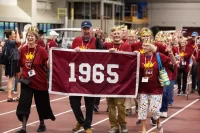
Stepping into the costume shop tucked under the stairs in Schaeffer Theatre is like entering a whole new world: colorful fabrics cover the walls, along with photos of costumes from past productions, spools of colored thread are impaled on a rack on the wall, and in the back, guarded by a small army of mannequins, racks and racks of costumes hang waiting to be worn.
It’s 2:20 in the afternoon, and Carol Farrell, supervisor of the costume shop, is taking a tea break with two of her student workers. Afternoon tea is a long-held tradition in the costume shop, but it’s more than just a moment to relax: it’s a time to swap inspiration, life updates, or really anything.
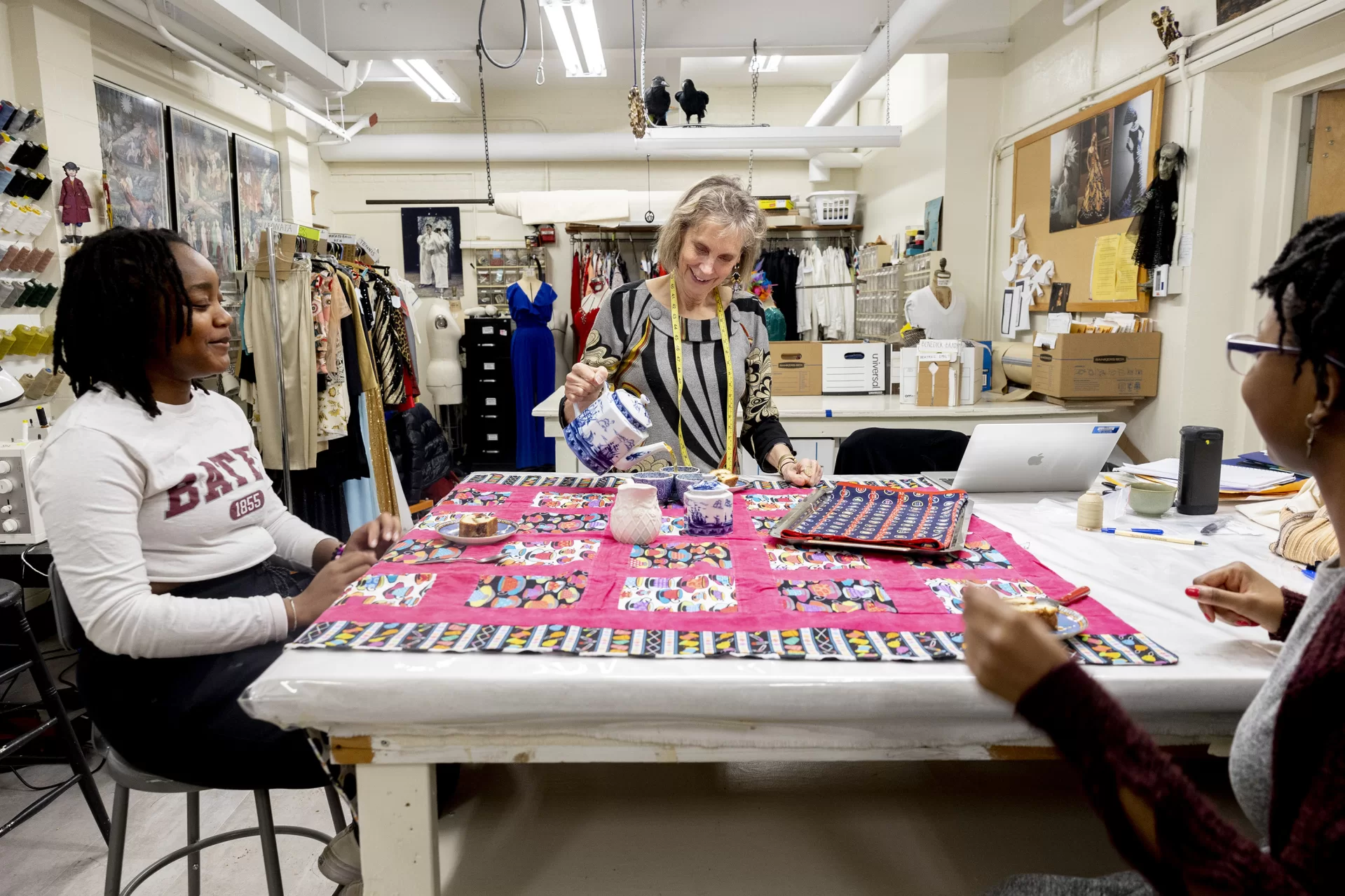
The shop is a sort of organized chaos (emphasis on the “organized” part), and it’s currently ground zero for an upcoming production of Shakespeare’s Much Ado About Nothing, set for March 16–20.
Rather than 16th-century Italy, director Tim Dugan, an assistant professor of theater, has placed the play three centuries later and a continent away. Instead of soldiers returning to the Italian harbor town of Messina, this production will have U.S. Army veterans returning to the idyllic Maine harbor town of Bar Harbor, on Mount Desert Island.
The move to mid-1900s Maine — and the large cast, with 25 characters — has helped to make the play one of the largest costumed productions Farrell has tackled in her 12 years at Bates, featuring some 70 costumes.
“It’s not unusual for me to have 70 dance costumes, but they’re a little simpler than this,” she shrugs. “It’s a little intense, but it’s all fun. I’m just really committed to this show, for it to be fun — and it should be not just fun to have people watch it, but fun to make and fun to do.”
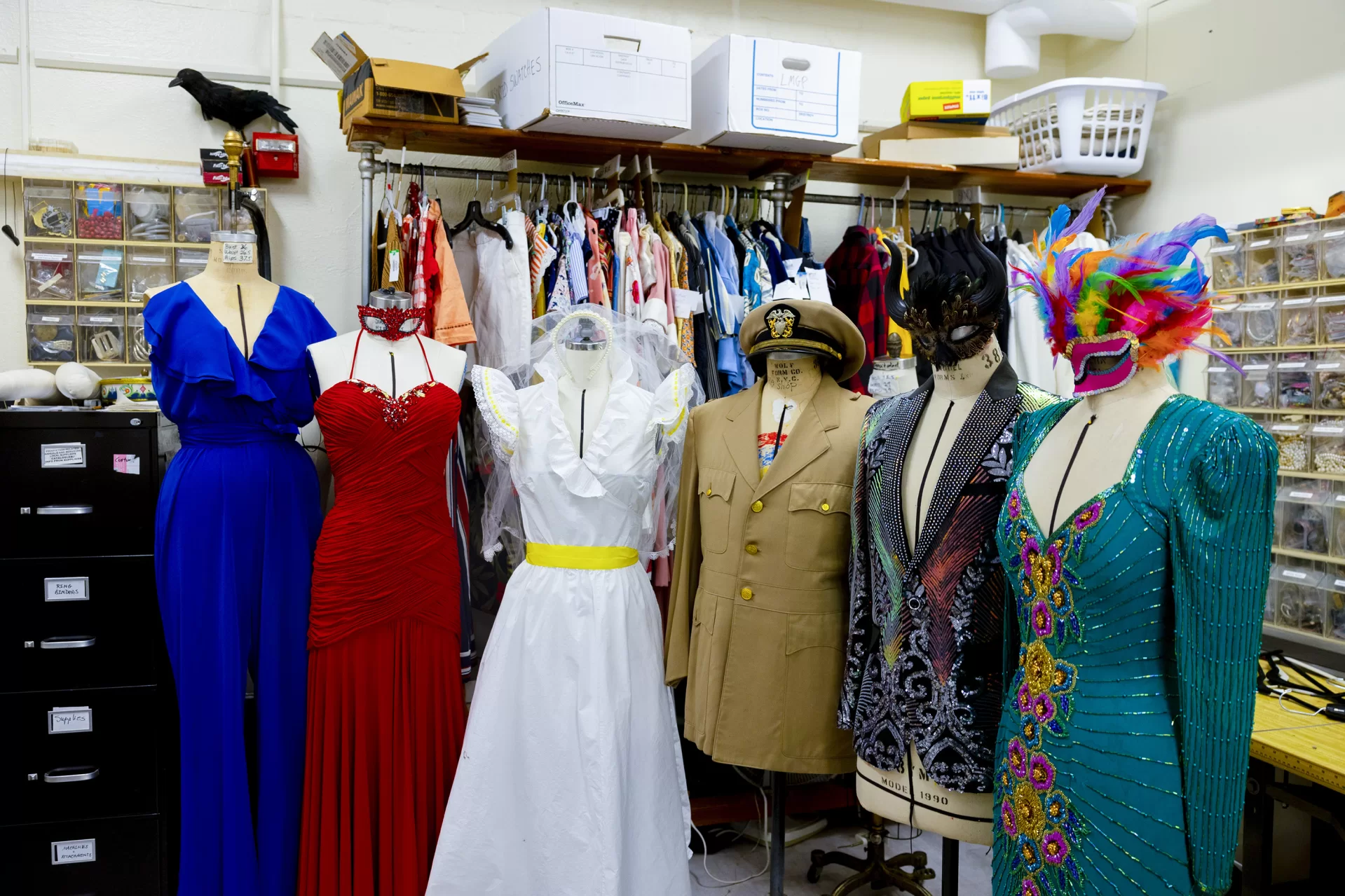
For Farrell, the time and setting of the play has a special meaning: Her mother, who was born in 1911, had a summer romance in 1933 with a British naval officer visiting Bar Harbor, before he was moved elsewhere, finally ending up stationed in the South China Sea.
They corresponded for years afterwards, exchanging letters and gifts, and even became engaged. “It was all terribly romantic until she dumped him and married my father,” Carol says. “But I feel like I can see her in the young women in this play who are entertaining these returning troops, so I feel like I know these people and I’m channeling her in a fond way as I work on the piece. So that sort of makes it sparkle for me a little bit.”
The cast was finalized only last week, and the whole team just had their first meeting, affectionately referred to as the “dog and pony show,” where they presented their ideas and plans going forward, and met the finalized cast. “There were 30 people in the room,” Farrell laughs. “It’s really a great ensemble and it’s gonna be a great show.”
After tea is over, Lauren Reed ’23 of Baton Rouge, La., gets to work picking out the trim on the shoulder of a U.S. military jacket. Before joining the costume shop last year, she worked in the carpentry shop.
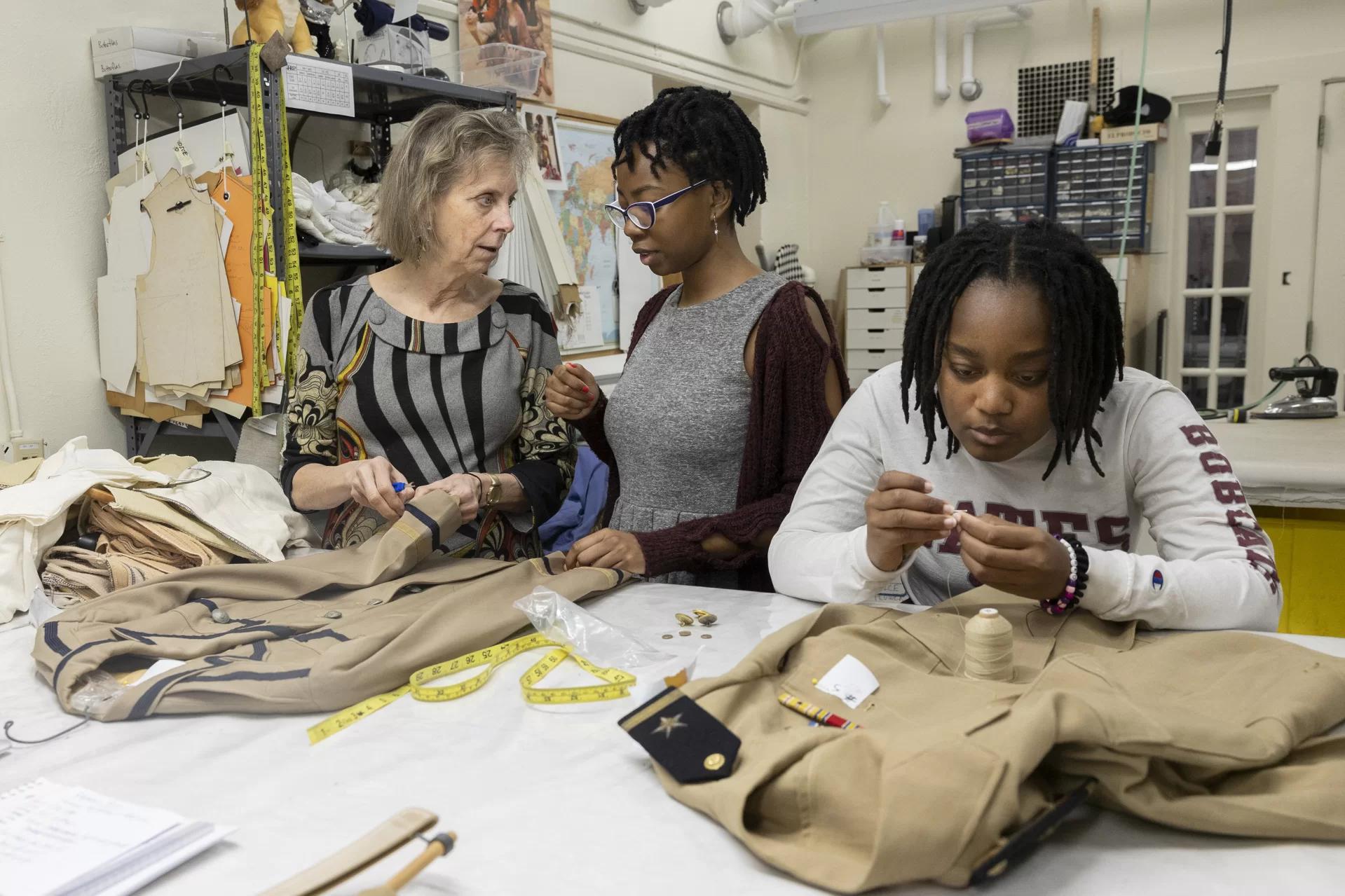
“I love getting to work behind the scenes,” she says. “When I see a piece I worked on being worn onstage, I’m part of the play.”
Next to the double doors of the costume shop, there’s a whole rack full of pieces of various World War II-era U.S. Army infantry uniforms, waiting to be altered and decorated. To figure out precisely what those uniforms looked like in 1945, Farrell enlisted the help of her husband, John. Together, they operated Figures of Speech Theatre, a puppet theatre, and have brought their craft to the Bates stage several times, including last year’s “Antigonick.”
“My husband — who knows nothing about the military, but is a super-good history researcher — he took on the task and now we’ve ordered all the proper patches and stars and insignia and I know where to put them on the uniforms.”
A little to the right of the uniforms, pinned to the wall and trailing swatches of brightly patterned fabrics, are some sketches Farrell drew for various other costumes; some generic summer dresses, featuring the classic 1940s fitted silhouette; wedding dresses for the four “brides-in-disguise” near the end of the play; gear for some fishermen; and special ensembles for Dogberry and Verges, who provide comic relief as the constable and his partner.
Dogberry and Verges are two characters that make costuming especially fun, says Farrell, since they’re the “clown” characters. In fact, the two actors are getting actual clown lessons for the roles, so Farrell has been hustling to get as many costume pieces together beforehand, “so they have something to play with,” like tie-on mustaches, big boots, and suspenders.
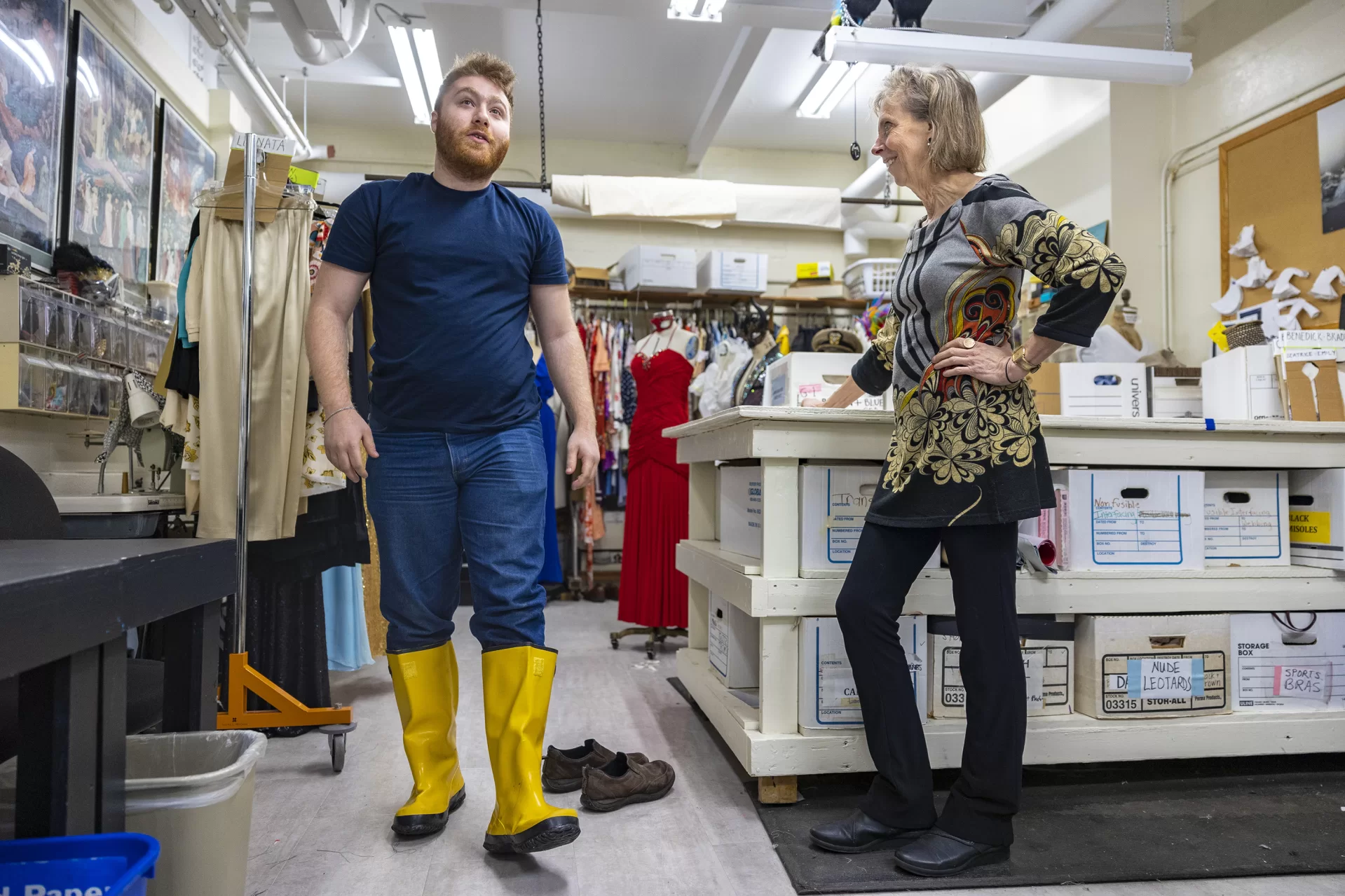
But the one scene she’s most looking forward to dressing? “The masked ball,” she grins. “Every costume needs to be super sparkly and every mask needs to be fabulous, so what’s not to like?”
Indeed, a rack of silky, glittery, and sequined dresses, skirts, pants, and blazers are waiting to be picked for each character. Elsewhere in the room are boxes full of masks in every color, shape, and degree of fabulousness, and a wall of drawers full of sequins, buttons, glitter, zippers, and assorted findings of every kind imaginable. It’s a costumer’s treasure trove.
But for now, measurements need to be obtained, and then the real work can begin: matching the right pieces to the right people, deciding where adjustments and alterations need to be made, and where the “blanks” are; costumes that need to be sourced or made from scratch.
The mood so far is cheerful, and everyone is excited to work on the production. “And hopefully,” Farrell adds, “that’ll be enough to carry us through.”
